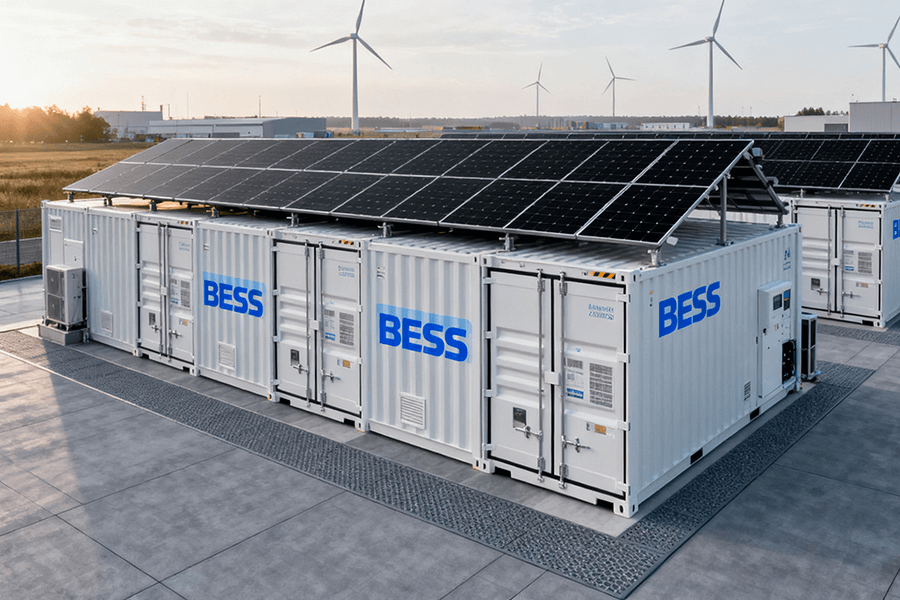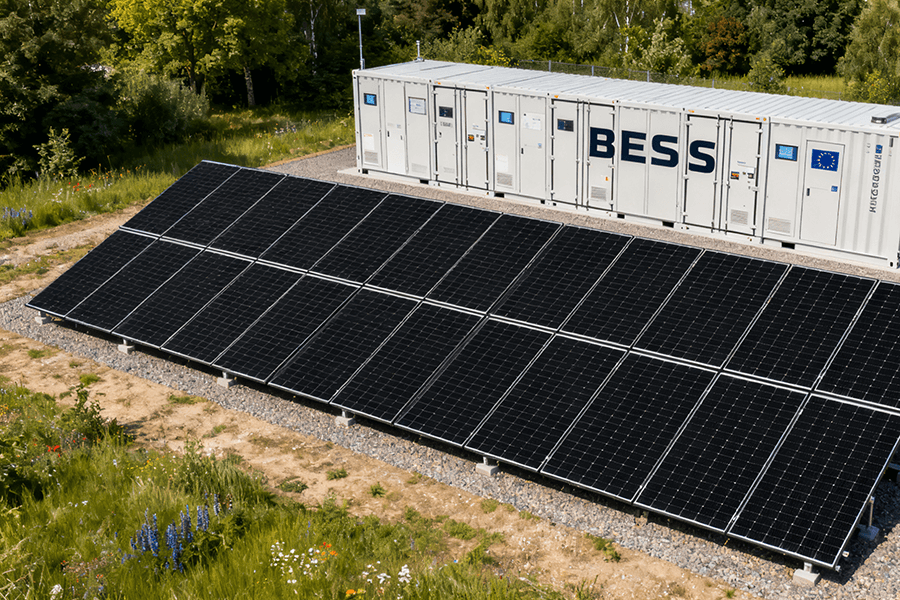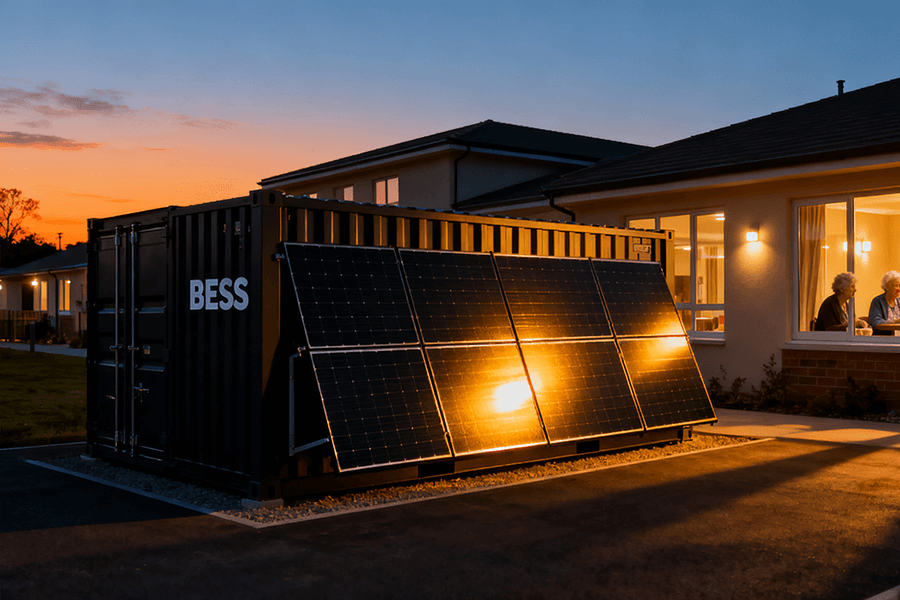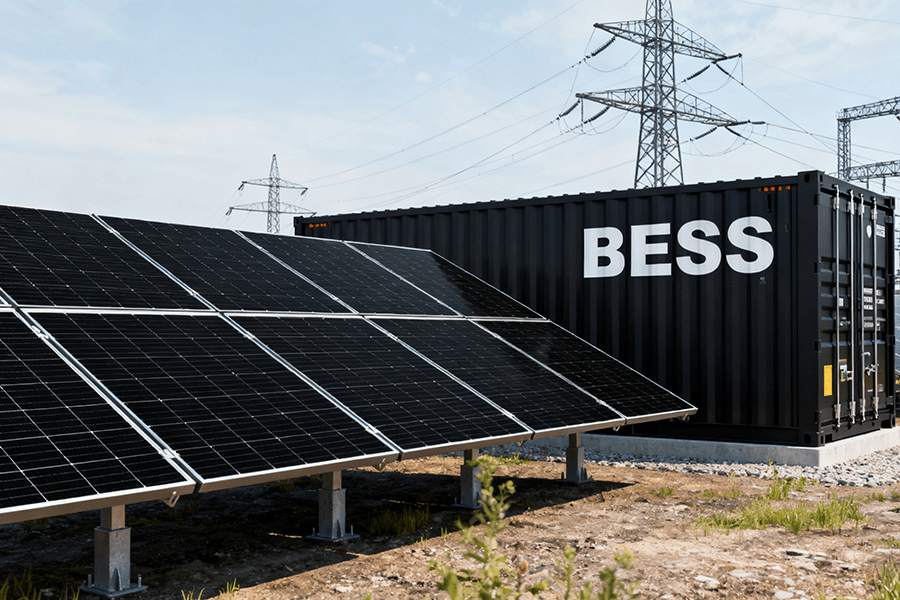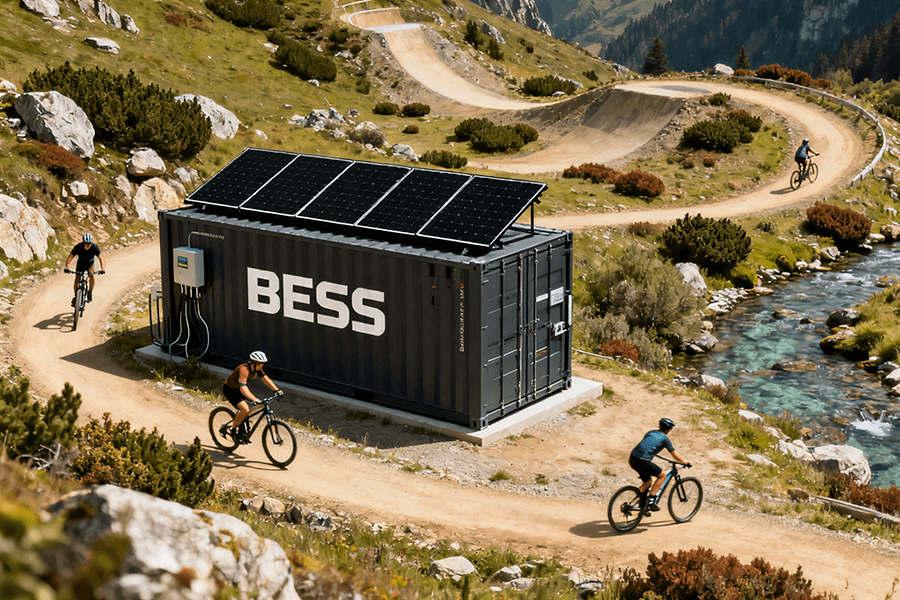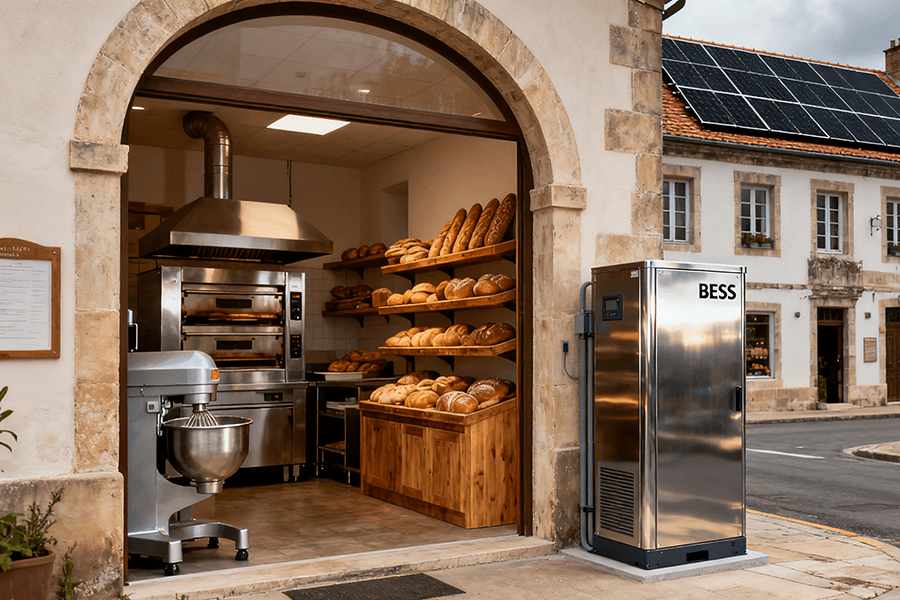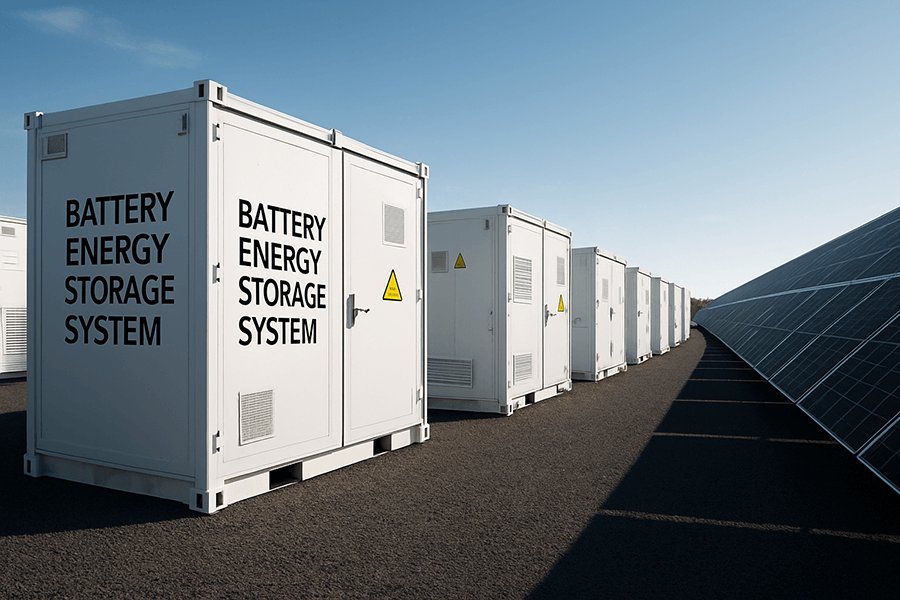
In 2025, the Battery Energy Storage System (BESS) container market is not just growing—it’s evolving at a pace that would make even a tech startup blush. What started as a niche solution for remote off-grid locations has now become the backbone of the global energy transition. These portable power storage units are no longer just “backup batteries”; they’re intelligent systems that can predict energy demand, integrate seamlessly with solar and wind farms, and even participate in grid frequency regulation. As countries race to meet net-zero targets, BESS containers are the unsung heroes that turn intermittent renewable energy into a reliable power source. Whether you’re a utility company managing a grid that’s 40% powered by wind, a farmer in a region with erratic rainfall needing consistent irrigation, or a data center that can’t afford a 0.1% downtime rate, choosing the right BESS container is critical. Let’s unpack the top 5 brands, each with its own superpowers, unique engineering quirks, and real-world track records, to help you find your perfect match.
Tesla Energy
Tesla’s Megapack isn’t just a BESS container—it’s a cultural phenomenon that’s reshaped the energy storage landscape. When it first hit the market in 2019, it was met with skepticism: could a company known for electric cars really disrupt the utility-scale storage industry? Fast forward to 2025, and the answer is a resounding “yes.” The Megapack has become the gold standard for utility companies and mega-projects, not just because of its performance, but because it’s synonymous with innovation in the renewable energy space. It’s the kind of product that makes headlines when it’s deployed, and for good reason.
Key Features & Data
| Feature | Details |
|---|---|
| Energy Capacity | Up to 3.9 MWh per unit, with unmatched scalability to multiple GWh (some projects exceed 10 GWh). A 100-unit cluster delivers 390 MWh—enough to power 39,000 average homes for a full day. This scalability is enabled by Tesla’s proprietary distributed control system, which synchronizes thousands of units without efficiency loss. |
| Durability | 15,000+ charge cycles (≈20-year lifespan)—longer than the operational life of most coal-fired plants. It operates in -20°C to 50°C, with optional cold-weather packages (heated enclosures, insulated coolant lines) for regions like Siberia (-40°C). The 12-gauge galvanized steel casing resists corrosion, even in coastal salt-spray environments. |
| Cost-Effectiveness | 150–200/kWh; a 100 MWh system costs 15–20 million. While pricey upfront, its high energy density (250 Wh/kg) reduces land costs (critical in urban areas). Maintenance costs are 15–20% lower than peers ($0.02/kWh/year) due to Tesla’s global scale. |
| Safety Measures |
Industry-leading thermal runaway prevention via active liquid cooling (maintains cell temps within ±2°C). 24/7 AI monitoring analyzes 10,000+ data points/sec to predict failures; NFPA 855 compliant with pressure venting that activates in <0.5 seconds to prevent explosions.
|
Real-World Impact
The Moss Landing Energy Storage Facility in California is Tesla’s crown jewel. This 4.8 GWh project—spread across 3,200 acres—showcased unprecedented agility during the 2024 heatwave: it discharged 2.1 GWh in a single day, replacing natural gas peaker plants and cutting 10,000 tons of emissions. Its speed (0–full power in <10 milliseconds) stabilized the grid during a sudden 500 MW wind drop, preventing a blackout in San Francisco. [https://www.tesla.com/energy/utility-scale-storage/megapack]
Pros & Cons
- Pros: Unrivaled scalability for utility-scale projects; seamless integration with Tesla solar products; global service network (90+ countries) with 48-hour support.
- Cons: Prohibitive upfront costs for small projects ((750k–)1M for 5 MWh); 6–12 month lead times for large orders; proprietary software blocks third-party integration.
Sungrow Power
Sungrow might lack Tesla’s household fame, but in the BESS world, it’s a quiet giant. Founded in 1997 as a solar inverter manufacturer, this Chinese brand leverages decades of renewable energy expertise to dominate mid-sized projects—think solar farms powering universities, industrial parks, or regional grids. It proves you don’t need utility-scale budgets for reliable storage.
Key Features & Data
| Feature |
Details
|
|---|---|
| Energy Capacity | 1–5 MWh per container, linkable to 500 MWh. 10 GWh+ deployed in 2024 (35% YoY growth), driven by demand in Europe and Australia. A 5 MWh unit fits in a 40-foot container (thanks to staggered cell and efficient cooling), making transport and installation far easier than bulkier alternatives. |
| Durability |
12,000 charge cycles (≈18-year lifespan). Its IP65 rating is a standout: dust-tight and resistant to low-pressure water jets, ideal for rainy Southeast Asia or dusty American Southwest. Cells sourced from CATL (top global battery maker) ensure consistency; 10-gauge aluminum casing resists humidity.
|
| Cost-Effectiveness |
120–160/kWh; a 100 MWh system costs 12–16 million (30% cheaper than Tesla for projects under 50 MWh). Vertical integration (in-house inverters) cuts costs; modular design lets you start small (5 MWh) and expand without overinvesting.
|
| Safety Measures |
UL 94 V-0 fire-resistant casing (self-extinguishes in 10 seconds). BMS balances cells to ±5 mV to prevent overheating; “sleep mode” cuts idle power by 50%; manual emergency stops (exterior and internal) for technician safety.
|
Real-World Impact
Australia’s Victoria Big Battery (2 GWh) increased the grid’s renewable absorption by 15%. Before installation, 100 MW of wind energy was wasted daily due to grid limits; now, the Sungrow system stores 500 MWh during peak winds and releases it during pricey evening demand. During a 2024 storm, it injected 500 MWh in 2 hours, avoiding $5M in business losses. [https://www.sungrowpower.com/product/bess.html]
In Spain’s La Mancha, a 5 MWh system powers 200 irrigation pumps, cutting grid reliance by 40%. It charges via solar by day and discharges at dawn (avoiding 30% higher peak tariffs), saving farmers €12k/pump/year.
Pros & Cons
- Pros: Budget-friendly for mid-sized projects; 2–3 month delivery (critical for tight deadlines); IP65 rating for harsh environments; user-friendly mobile monitoring.
- Cons: Low North American brand recognition (65% of lenders prefer Tesla); basic AI (no weather prediction); 72-hour service response in remote areas.
3. Fluence
If BESS containers were students, Fluence would be valedictorian. A joint venture between Siemens (industrial engineering giant) and AES (global power company), it combines decades of grid expertise with AI-driven efficiency. For customers treating storage as a strategic asset—not just backup—Fluence is unmatched.
Key Features & Data
| Feature |
Details
|
|---|---|
| Energy Capacity |
2–6 MWh per unit. Its Fluence IQ AI platform is the star: it optimizes charging/discharging using real-time grid prices, weather, and demand patterns, boosting output by 10–15% (10–15 MWh extra/year for a 100 MWh system). Honeycomb cell layout adds redundancy (30% higher reliability than traditional designs).
|
| Durability |
14,000 charge cycles (≈19-year lifespan). Operates in -30°C to 60°C (ideal for Canada’s winters or Saudi Arabia’s summers) via dual-mode cooling: liquid for heat, passive air for cold, cutting energy use by 20%. Marine-grade aluminum casing reduces transport costs by 15%.
|
| Cost-Effectiveness |
180-220/kWh; a 100 MWh system costs 18–22 million. AI cuts operational costs by 8–12%/year ((1.4–)2.6M/decade); 30% of revenue comes from grid services (frequency regulation), turning storage into a profit center.
|
| Safety Measures |
ISO 26262 certified (automotive-grade functional safety). Gas sensors detect battery off-gassing; dual-agent fire suppression (water + nitrogen) outperforms single-method systems; “black box” records data for incident analysis.
|
Real-World Impact
Texas’ Moss Bluff Wind Farm (500 MWh) uses Fluence IQ to charge during cheap off-peak hours and discharge at peak, saving $2.3M in 2024. It cut waste by 10,000 MWh/year—enough for 1,000 homes.
In Virginia’s “Data Center Alley,” a 20 MWh system predicts outages via AI, ensuring 100% uptime for $50M servers. It handled 12 outages in 2024 without data loss. [https://fluenceenergy.com/technology/energy-storage-systems/]
Pros & Cons
- Pros: AI-driven efficiency turns storage into a revenue stream; premium safety certifications; 40+ country footprint; remote troubleshooting fixes 80% of issues off-site.
- Cons: High upfront cost ((900k–)1.1M for 5 MWh); requires certified technicians; inflexible for non-standard grid frequencies (3–6 month customization).
Maxbo Solar
That’s us! At Maxbo Solar, we don’t chase size—we chase customization. Every project is unique: a Dubai data center needs different specs than a Norwegian farm. We build BESS containers that fit your needs, not the other way around.
Key Features & Data
|
Feature
|
Details
|
|---|---|
| Energy Capacity |
0.5–4 MWh per container, fully customizable (e.g., 2.2 MWh with enhanced cooling for Dubai data centers, 3.8 MWh with -25°C insulation for Norwegian farms). Scalable to 1 GWh via synchronized clusters, with software that adapts to your energy sources (solar, wind, hydro, biomass).
|
| Durability |
13,500+ charge cycles (≈20-year lifespan) with a 25-year warranty—the longest in the industry. Our 100% recycled steel casing resists corrosion and physical damage; climate-specific insulation ensures performance in -25°C to 55°C. No other brand combines durability with eco-conscious materials like Maxbo.
|
|
Cost-Effectiveness
|
130– 170/kWh; a 100 MWh system costs 13–17 million. 5% discount for solar+BESS bundles lowers upfront costs; recycled materials cut lifecycle costs by 12%. Modular design avoids overinvestment—start small and expand as needed.
|
| Safety Measures |
UL 1973 certified (rigorous electrical and environmental safety). We use non-toxic LFP batteries (no thermal runaway history, unlike lithium-ion). 24/7 cloud monitoring sends SMS alerts instantly; fire suppression links to smoke/heat sensors for rapid response.
|
Real-World Impact
Our 150 MWh system in Berlin’s Solar Park powered 10,000 homes during 2024 winter blackouts. Its recycled steel casing withstood -15°C, and LFP batteries passed fire drills with zero toxic fumes—qualifying for €2.1M in green tax credits. [https://www.maxbo-solar.com/bess-containers/]
In Costa Rica, a 2 MWh custom system pairs with hydro power, storing rainy-season excess to cut diesel use by 70% in dry months. It’s programmed to sync with local river flow patterns—something “one-size” brands can’t match.
Pros & Cons
- Pros: Tailor-made designs for your climate, energy sources, and goals; 25-year warranty (industry-leading); 40% lower carbon footprint via recycled materials; 4-hour support response (vs. 48+ hours for competitors).
- Cons: Smaller global footprint (4–6 week delivery to remote areas); limited stock for <2-week urgent orders (we prioritize customization over mass production).
BYD Energy
BYD, an EV giant, brings its battery expertise to BESS with a laser focus on safety. It’s the brand you trust when downtime or incidents aren’t an option—hospitals, schools, and remote communities rely on it.
Key Features & Data
| Feature |
Details
|
|---|---|
| Energy Capacity |
1.2–5 MWh per container; 5 GWh+ deployed in 2024 (strong in SE Asia/Latin America). Blade Battery tech (thin, long cells) enables compact, high-density storage—critical for space-constrained sites.
|
| Durability |
12,500 charge cycles (≈17-year lifespan). Its puncture-resistant Blade Batteries gained viral attention in 2023: a nail driven through a cell caused no fire or explosion. Operates in -20°C to 50°C; aluminum casing resists humidity.
|
| Cost-Effectiveness |
(110–)150/kWh; a 100 MWh system costs (11–)15 million (cheapest in the top 5). Low maintenance (no annual cell replacements) and in-house battery production cut long-term costs.
|
| Safety Measures |
Zero thermal runaway incidents in 10+ years. IEC 62133 certified; BMS with overcharge/short-circuit protection; passive cooling reduces fire risks (no active pumps/fans to fail).
|
Real-World Impact
Brazil’s Amazon Wind Farm (1 GWh) uses BYD to power 3,000 remote homes, cutting diesel use by 90% and saving $400k/year. Its Blade Batteries survived 2024 floods with no performance loss.
In India, a 50 MWh system at Hyderabad’s pharma plant keeps vaccines cold during 27 outages in 2024—critical, as temperatures over 8°C ruin $100k+ of stock daily.
Pros & Cons
- Pros: Unbeatable safety record; lowest cost in the top 5; compatible with most renewables; ideal for small projects/budgets.
- Cons: Limited scalability (>500 MWh = efficiency drops); slow software updates (quarterly, vs. monthly for peers).
Final Verdict: Which Brand Fits You?
When choosing a BESS container brand, it’s crucial to align your requirements with the strengths of each provider. Here’s a more detailed breakdown to help you make an informed decision:
- Utility-scale grids: For large-scale energy storage projects powering entire communities or regions, Tesla stands out with its unparalleled scalability. Their Megapack systems can be easily integrated into existing power grids, handling massive energy loads with ease. On the other hand, Fluence leverages advanced AI algorithms to optimize energy usage, ensuring maximum efficiency and cost savings for large-scale operations.
- Mid-sized budgets: If you’re working with a more moderate budget but still require reliable performance, Sungrow offers an excellent balance of cost and quality. Their BESS containers are known for their durability and consistent energy storage capabilities. For those looking for the most cost-effective solution without sacrificing too much on performance, BYD provides high-capacity containers at competitive prices, making them a popular choice for mid-sized projects.
- Custom/eco needs: Maxbo Solar shines when it comes to meeting custom and eco-friendly requirements. Our team of experts works closely with clients to design BESS containers that are tailored to their specific energy needs. Whether you have unique space constraints or require a system that integrates seamlessly with renewable energy sources, we’ve got you covered. Additionally, our commitment to sustainability means that all our containers are built using eco-friendly materials and manufacturing processes. With a 25-year warranty, you can be confident in the long-term reliability of our solutions.
- Safety-critical sites: In environments where safety is of utmost importance, such as data centers or hospitals, BYD‘s track record of zero safety incidents provides peace of mind. Their containers are built with multiple layers of safety features to prevent accidents and ensure continuous operation. Fluence, meanwhile, holds a range of premium certifications that attest to the high safety and quality standards of their BESS containers, making them a trusted choice for safety-sensitive applications.
At Maxbo Solar, we believe that energy storage solutions should be as unique as the businesses and communities they serve. That’s why we’re not just selling containers—we’re building energy solutions that grow with you. Our 25-year warranty, customization options, and eco-friendly focus mean you’ll never outgrow your system or compromise on your values. Visit www.maxbo-solar.com for a free, no-obligation design proposal today and take the first step towards a more sustainable and efficient energy future.

